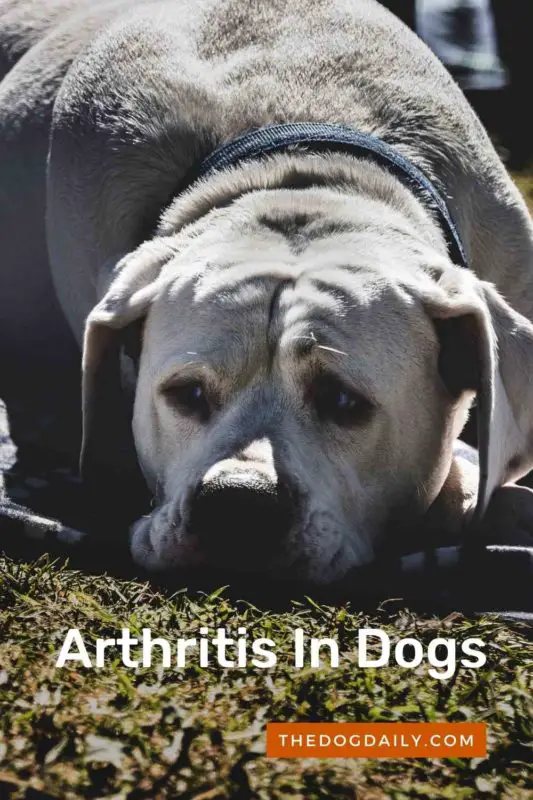Treatment for Arthritis in Dogs
As a senior emergency clinician at BluePearl Pet Hospital in Brooklyn, NY, Trisha Joyce, DVM, has seen her share of doggie trauma. But she says some of the saddest cases are the least dramatic: dogs suffering from severe arthritis.
“One family brought in their Labrador that was so arthritic he couldn’t even get up to go to the bathroom,” Dr. Joyce says. “His overall health was OK, but he was just too big and too arthritic. The owners came in to euthanize, which was a tough decision because it’s not like he had a life-threatening disease. But there was no practical way to manage it at home.”
Dog Arthritis Is Common
Scientific studies indicate that 20 percent of middle-aged dogs and 90 percent of older dogs have osteoarthritis in at least one joint. According to James Cook, DVM, at the University of Missouri-Columbia, it’s hard to stop the disease once it has set in.
“There are two problems we see in osteoarthritis,” explains Dr. Cook. “One is we don’t have a cure, and the other is that we still see the progression of arthritis even after the best treatments. Both of those problems come from the fact that we diagnose it too late.”
A Research Breakthrough in Dog Arthritis
Dr. Cook and his research team, however, may have found the key to early diagnosis. It’s what he calls “the Holy Grail” in the fluid that surrounds and lubricates the joints of both dogs and people. Dr. Cook sampled this fluid from dogs known to have osteoarthritis and from others without the disease. As he wrote in the American Journal of Veterinary Research, a pattern became evident when he analyzed the fluid proteins.
The scientists noticed that the quality and quantity of this fluid were altered in arthritic dogs. Examining the fluid even more closely, they identified seven proteins that appear to be linked to arthritis. The proteins increase and decrease in patterns that “are consistently different than [patterns] found in normal patients with no arthritis at all,” notes Dr. Cook.
Treatment For Dog Arthritis
Dr. Cook and his team plan to follow healthy dogs over time to see if the pattern can correctly predict which dogs end up getting arthritis. If everything happens as theorized and according to schedule, he hopes that a screening test will be available for young dogs in three to four years.
Until then, here is some practical advice for dog owners worried about, or already dealing with, canine arthritis:
-
Canine Arthritis Warning signs
Watch for decreased activity and signs of pain. These may be overt (e.g., limping, lameness, whimpering) or subtle, like a typically pleasant dog becoming snippy. Some arthritic dogs may consistently stop doing only specific activities, such as jumping on the bed or into a car.
-
Dog Arthritis Diagnosis
If you think your dog has arthritis, schedule a visit with your veterinarian for a comprehensive diagnosis of the problem. Knowing which joints are affected and how severely can significantly help determine which treatment options to consider.
Treatment For Your Dog
Dr. Joyce says that while arthritis is forever and can’t be undone, certain medications can alleviate pain and symptoms. Other considerations include alternative treatments like acupuncture and hydrotherapy. Surgical procedures are an option for extreme cases. Most dogs will achieve a higher quality of life with any of these treatments.
-
Activity
The best way to treat and prevent arthritis is to help your dog stay in good shape. Maintain its weight in the low end of the normal range and keep your pet active just enough to sustain muscle tone and strength. Start with moderate activity levels — a brisk walk, limited periods of playing in the park — and work your way up. Through trial and error with careful monitoring, you can find your dog’s “sweet spot” of exercise for optimal joint health.
-
Your Dog’s Diet
A healthy diet is a big part of staying in shape. Dr. Cook recommends going with name brands that commit to putting science into dog food, offer well-balanced nutrition, and are tailored to specific breed sizes. He says that while supplements cannot prevent the disease, they can help alleviate pain. “Pet foods with glucosamine and chondroitin or fish oil can help manage the disease because they reduce inflammation and degradation,” he adds.
A Cure For Dog Arthritis Is On The Horizon
Is the ultimate solution — a cure for arthritis — within reach? Dr. Cook says he hopes his research is starting to point in the direction of a cure. If his biomarkers pattern can truly predict arthritis, scientists will be closer to determining the root causes of the disease.
“Now we know earlier steps in the process,” he says. “If we can address those steps, we could potentially have a cure. We are getting to the foundation steps, or the critical cogs in the wheel, of what becomes arthritis.”
Article written by Author: Brad Kloza


Pingback: The Differences Between Small, Adult, and Large Breed Dog Food